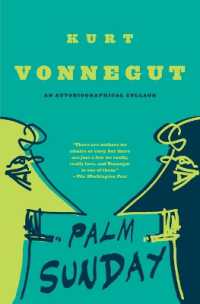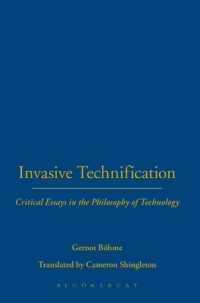- ホーム
- > 洋書
- > 英文書
- > Science / Mathematics
Full Description
The integration of results across the various techniques signify a new era in our knowledge of how human auditory cortex forms basis for auditory experience. Each chapter will first outline how the methodology is used in auditory neuroscience, highlighting the challenges of obtaining data from human auditory cortex;








